Kate Castelli is one of 12 artists selected as a Gallery 263 2023–2024 Small Works Project artist. This project presents artwork in flat files at the gallery and on our website. Visit Castelli’s Small Works Project page →
Can you tell us a little about yourself?
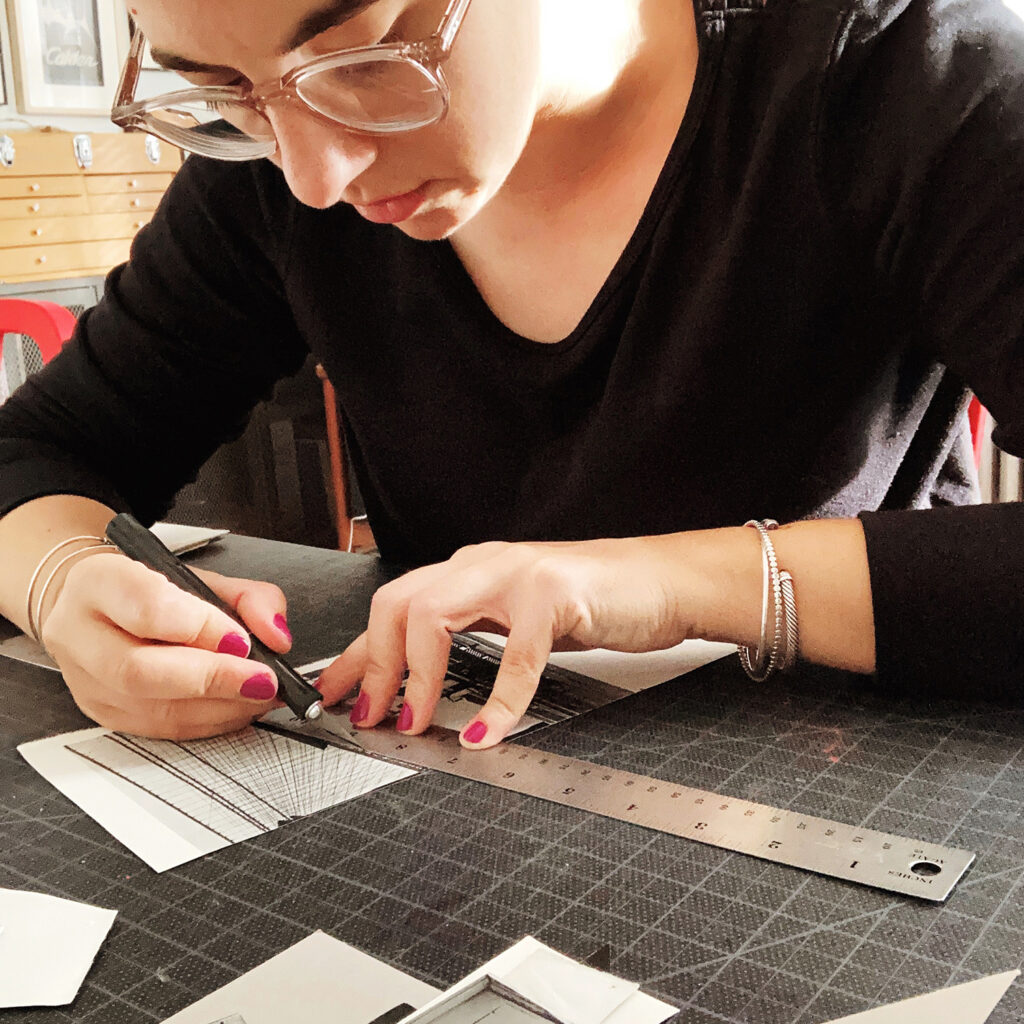
I grew up in Connecticut. I came to Boston for college and never left. I got my BFA in illustration and art history at the Art Institute of Boston, and my MFA in printmaking and book arts at the School of the Museum of Fine Arts Boston/Tufts University. I’m currently an associate professor and department chair of the Illustration and Visual Narratives program at Lesley Art and Design (LA+D) in Cambridge, Mass. I’ve been teaching in higher education for 15 years. Being on an academic calendar works well for me and my studio practice.
When I’m not making, teaching, or thinking about art: I love to travel, read past my bedtime, haunt coffee shops and bookstores, and feed the squirrels in my backyard.
What kind of art do you make?
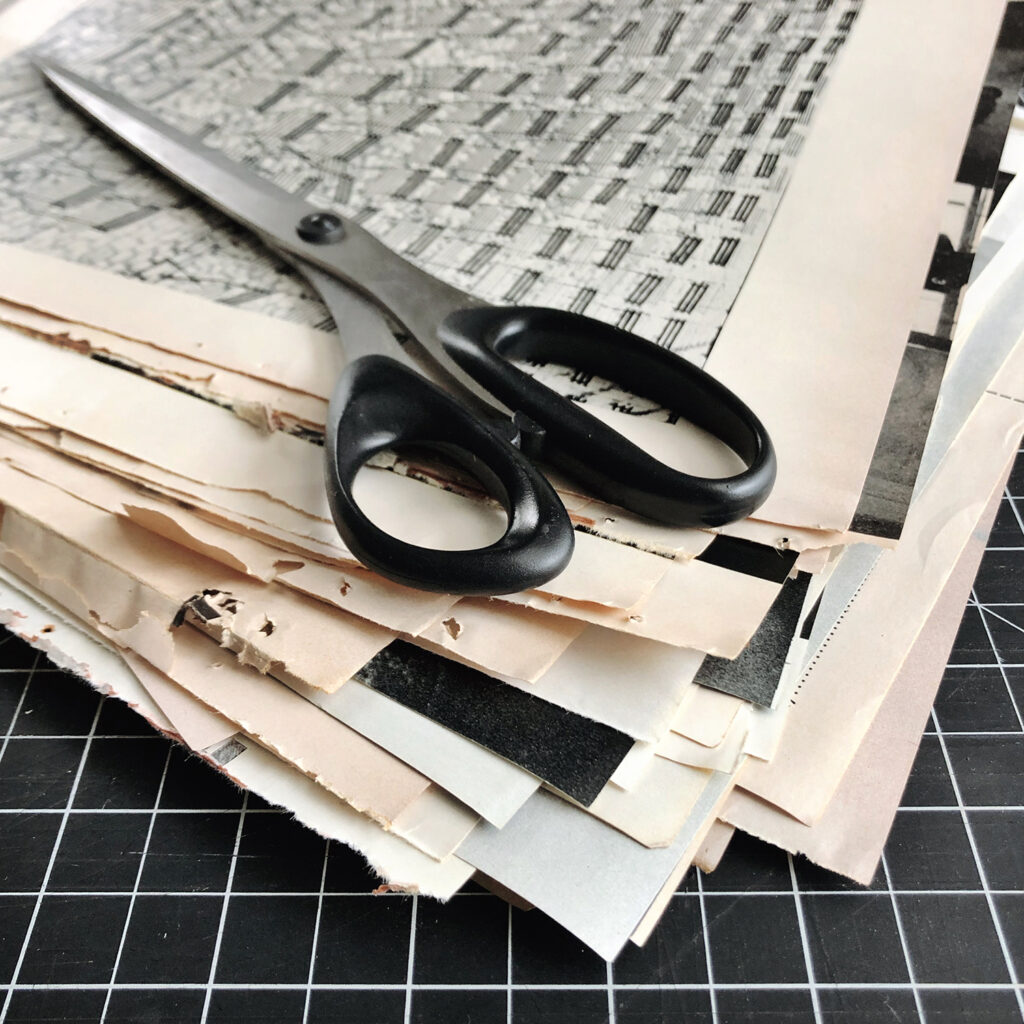
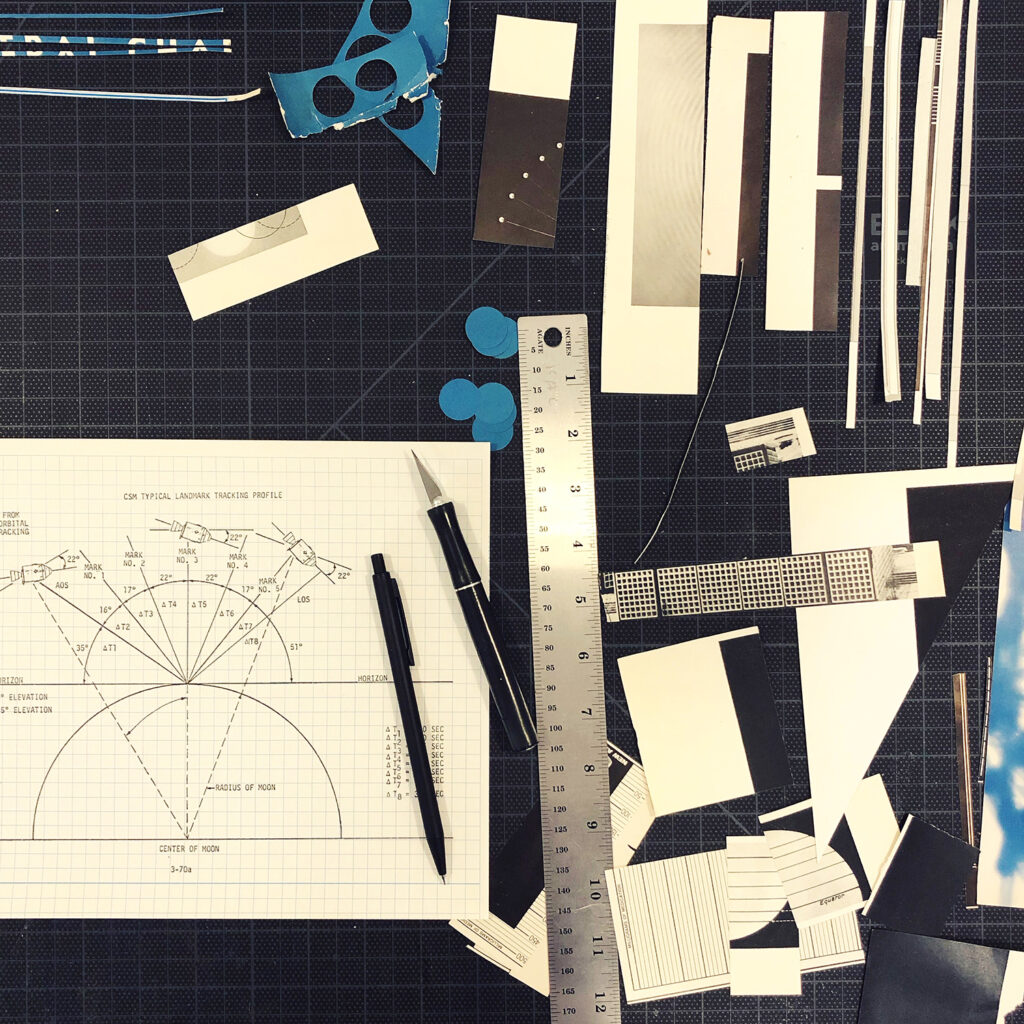
My work is an intersection of experimental printmaking, mark making, collage and artist books. Working on or with paper is the common thread. They all overlap and inform each other.
I don’t like a blank page or pristine white paper. It feels too daunting. That’s why I use ephemera and found paper as a starting point for my work. It’s more subtle and it has a memory and history that new paper lacks. I’d like to think that my work adds to that history in some way.
What concepts does your art explore?
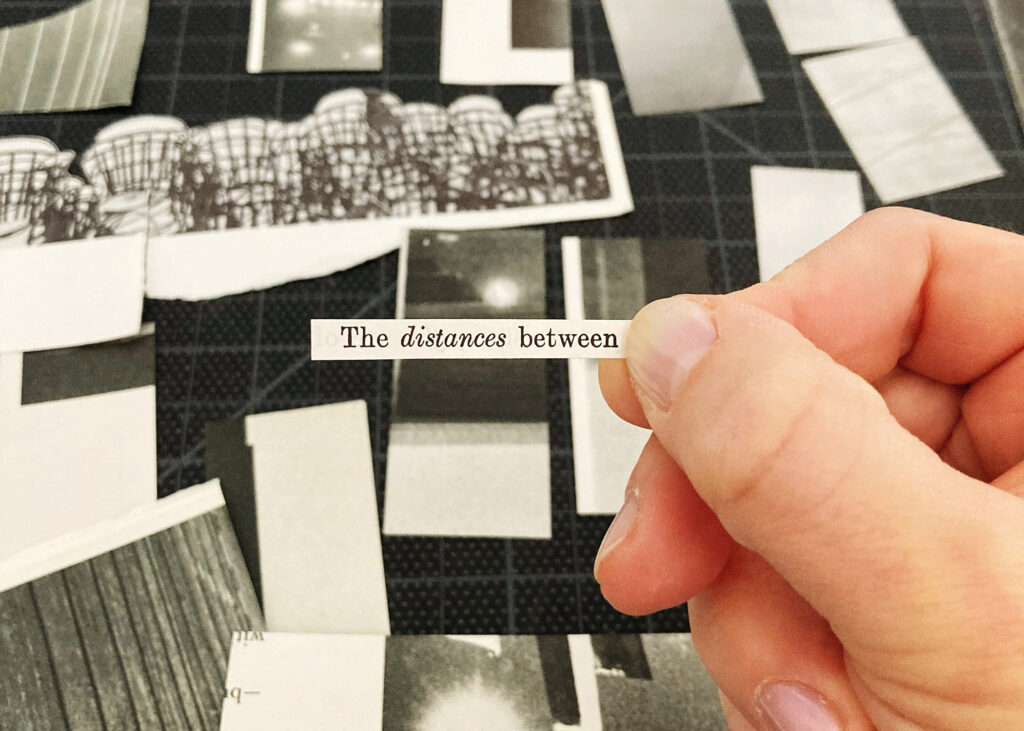
I explore poetic and formal juxtapositions in order to connect what cannot be connected. Someone once called my work “Sherlockian” and that feels appropriate. By definition collage is a collection of fragments that make new meanings. I like to play with the connections between those fragments: what happens at the edges and intersections? What glimpses are captured? What moments need to be recorded or remembered? These are where visual and narrative threads emerge for me.
Can you tell us about the work you have on view in your flat file drawer at the gallery?
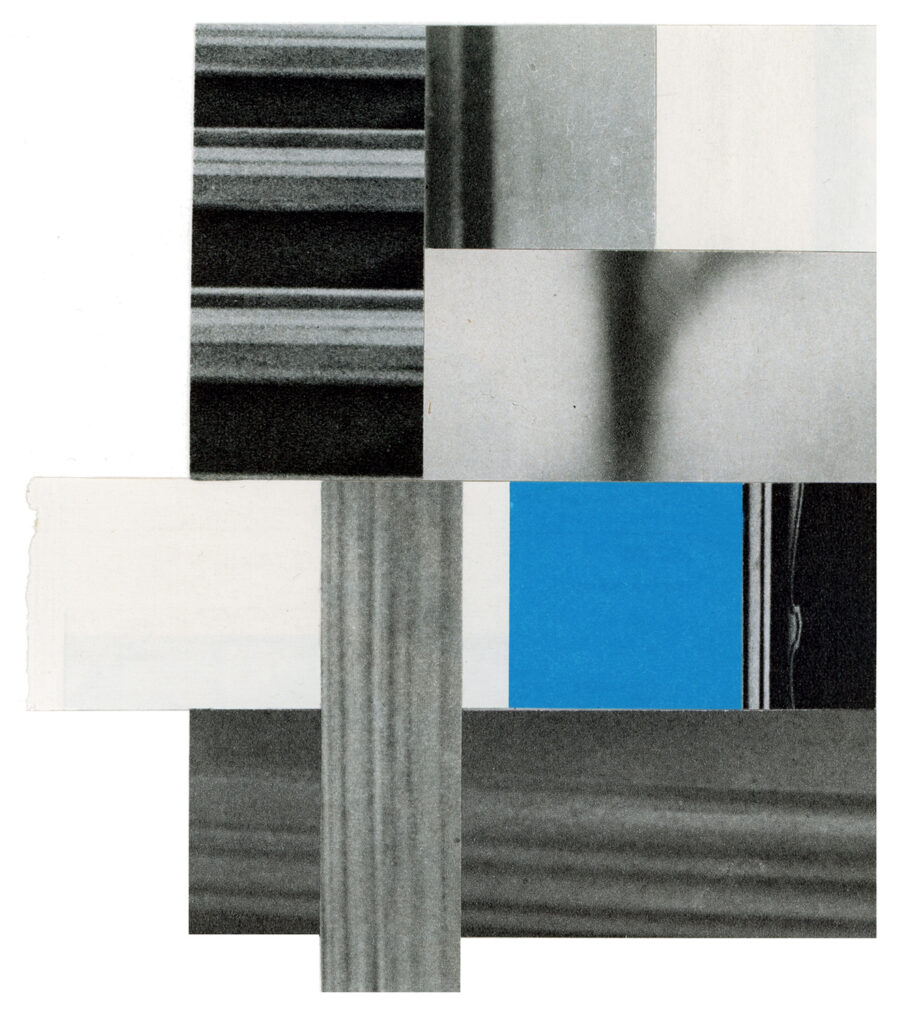
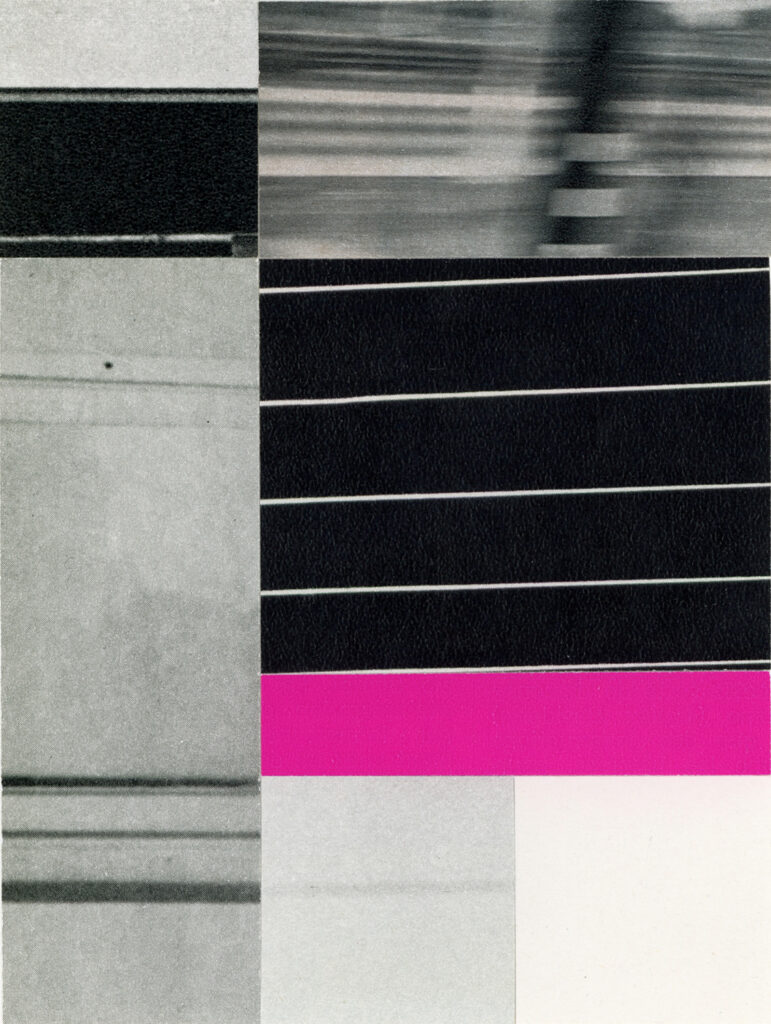
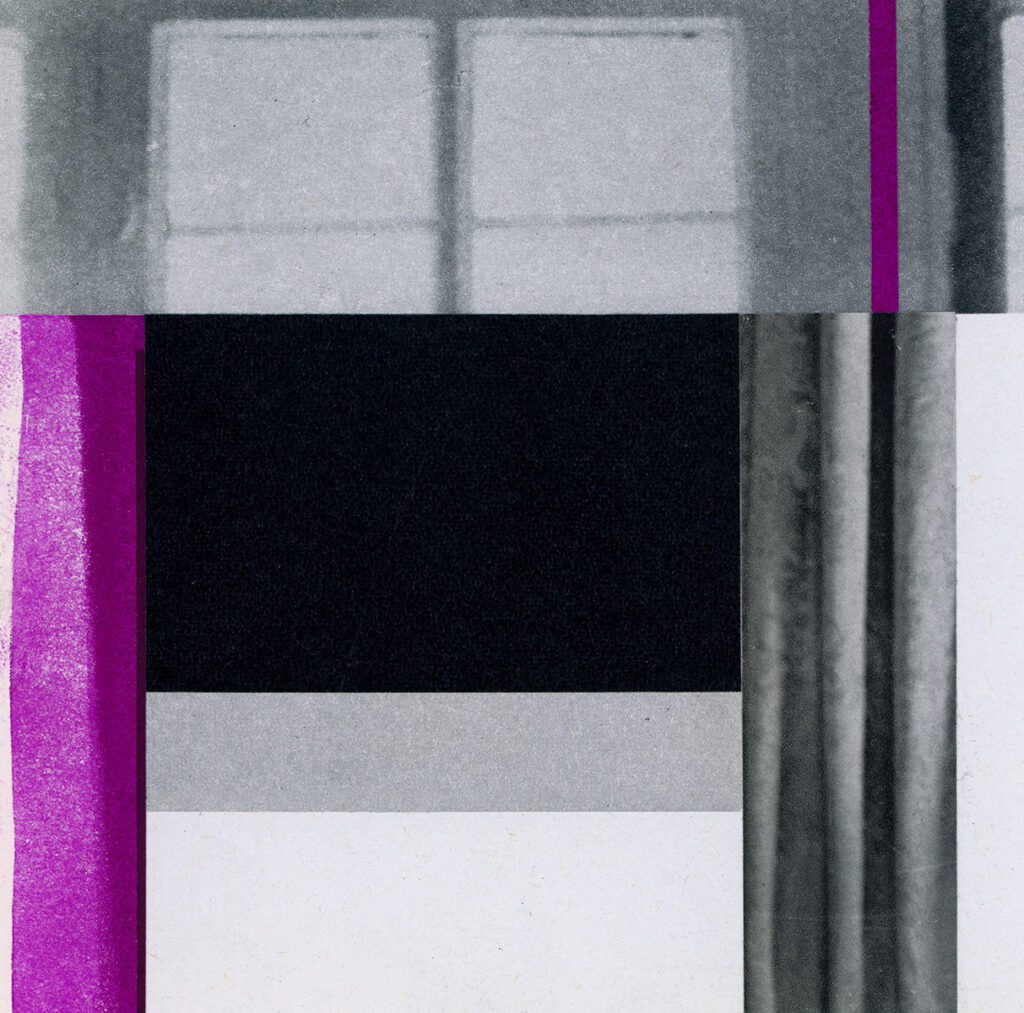
The work in the drawers was made during the depths of the pandemic lockdown from March 2020-March 2022. Like so many, I was constantly negotiating living in isolation in the city. Taking a long daily neighborhood walk became my salvation and inspiration. During this time my subject matter explored the parallel themes of urban landscapes and the architecture of interior spaces. Windows, doorways, and edifices dominated my compositions. The monochromatic color palette was a result of my source material of vintage magazines from the mid-century and my mood. The limited colors I incorporated were saturated and intense, but used sparingly.
Where do you make your work?
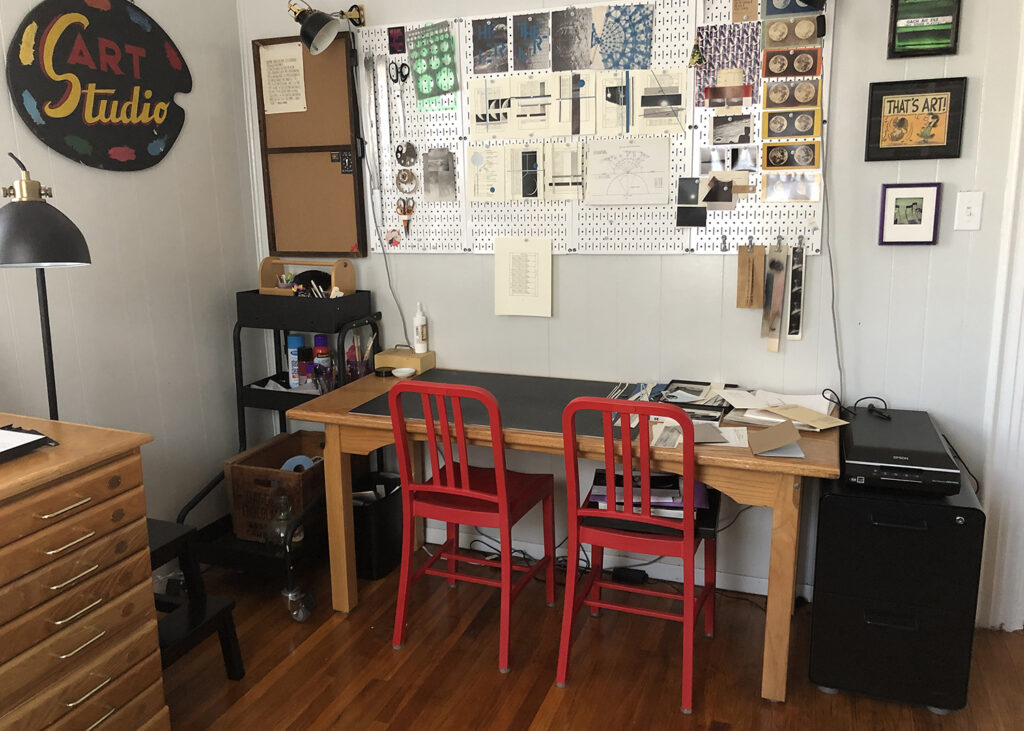
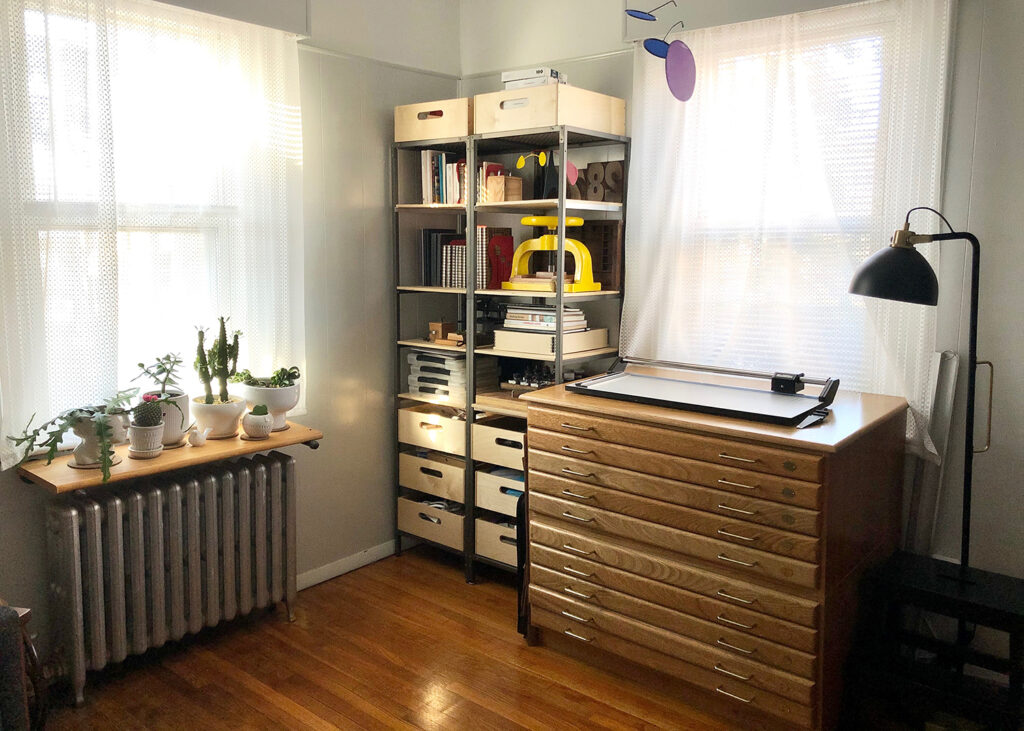
I’m lucky to have a dedicated studio space in my home. I converted a bedroom of my apartment into a workspace. It’s actually the room with the best light and one of the reasons I moved into the apartment in the first place. I’ve never liked having a studio space outside of where I live. I’m a night owl and tend to work after dinner and late into the night. I need a big tabletop to spread out on. Collage is the best kind of chaos, but it does tend to take over a surface.
What are your favorite materials to use? Most unusual?
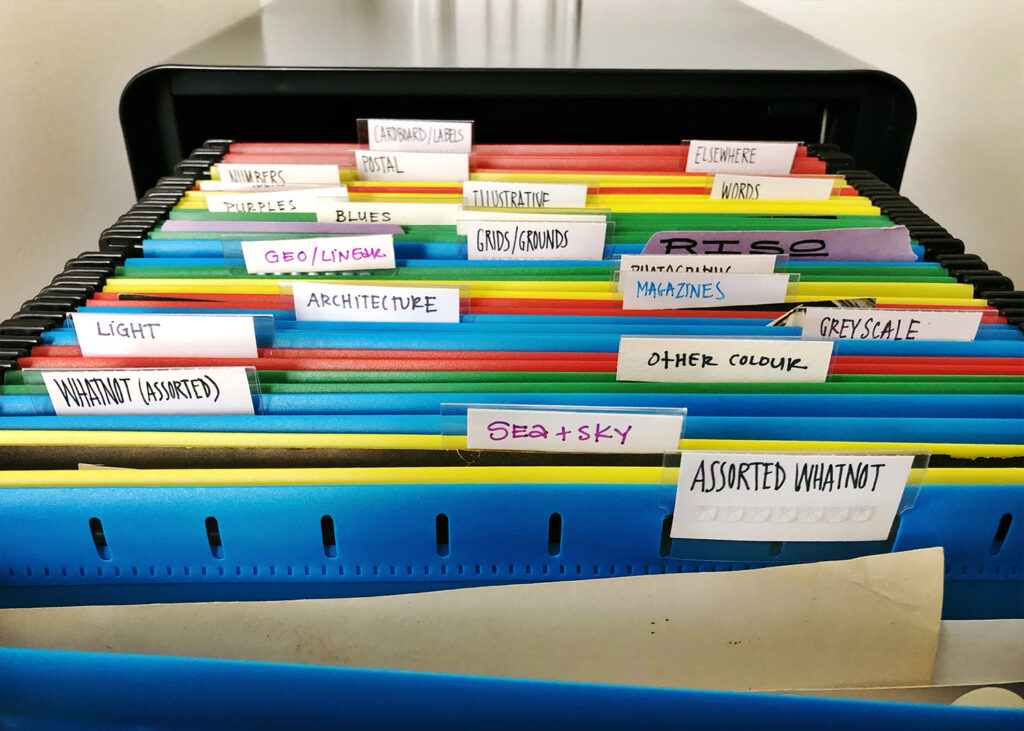

I source most of my collage materials from used bookstores and antique shops. Hunting for vintage ephemera is a big part of my process and something I do everytime I travel. Sometimes I look for specific subjects or content like astronomy textbooks or magazines about the Apollo 11 moon landing. Other times I stumble on something that informs the work I make.
I always have plenty of PVA glue on hand, buy #11 exacto blades in bulk, and keep a bone folder handy for collage. I have antique book presses that I use to flatten the collages as they dry. I organize my collage materials in a filing cabinet. The categories make sense to me, but probably not to anyone else
What historical and contemporary artists inspire you?
Encountering the work of William Kentridge and Joseph Cornell was a real pivotal moment for me as an undergrad art student. I find inspiration in a lot of 20th century graphic design, Japanese printmaking (and printmaking in general), and the DaDa and Bauhaus movements. But inspiration really hits you sideways sometimes: it could be the folds of fabric on an ancient Greco-Roman statue in a museum, the retro color palette of an episode of the original Star Trek, or a sentence I read in a book.
When did you decide you wanted to be an artist?
My parents will tell you that I’ve always been an artist from a small child. But I didn’t seriously consider it as a professional calling until high school. Now I don’t think I could be anything other than an artist. It’s the only way I know how to move through the world.